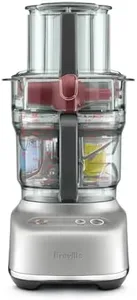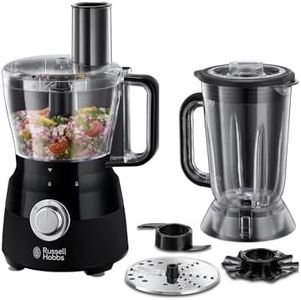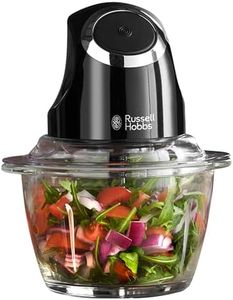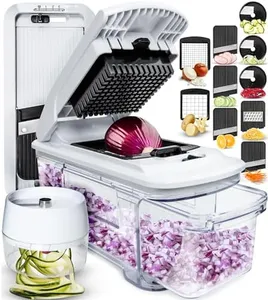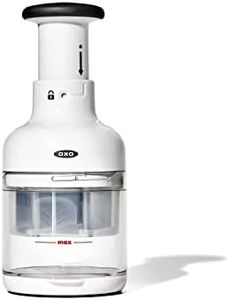We Use CookiesWe use cookies to enhance the security, performance,
functionality and for analytical and promotional activities. By continuing to browse this site you
are agreeing to our privacy policy
10 Best Vegetable Choppers
From leading brands and best sellers available on the web.By clicking on a link to a third party's website, log data is shared with that third party.
Buying Guide for the Best Vegetable Choppers
Choosing the right vegetable chopper can save you time and effort in the kitchen, making meal preparation much easier. When selecting a vegetable chopper, it's important to think about how often you'll use it, what types of vegetables you typically chop, and how much space you have in your kitchen. Different choppers are designed with various features that can help with different chopping tasks, so understanding the key specifications will ensure you pick one that really fits your needs.Type (Manual vs. Electric)This refers to whether the chopper is operated by hand or plugged into an electrical outlet. Manual choppers are great for small tasks, simple use, and quick clean-up, usually using a pull cord, push-down mechanism, or rotating blades. Electric choppers are perfect if you prepare large amounts or want effortless chopping – they work with a button and can be more powerful. If you prepare salads or cook often, electric may save you more time, but for quick, simple jobs or if you value easy storage, manual may be perfect.
Blade Material and DesignBlade material, most commonly stainless steel, is crucial because it affects how well and how long your chopper will perform. Stainless steel blades are sharp, durable, and do not rust easily, making them ideal for vegetables. Some choppers have interchangeable blades for dicing, julienning, or slicing, which adds versatility. If you mostly want to chop onions or tomatoes, a standard chopping blade works; but if you enjoy experimenting with shapes and textures, look for models with multiple blade options.
CapacityCapacity is the size of the container that catches the chopped vegetables and is measured in cups, liters, or milliliters. For small servings or limited counter space, a 1–2 cup capacity is suitable, while for families or meal preppers, something 4 cups or larger can prevent repeated emptying. If you often cook for groups, a larger capacity will let you chop more at once, but if you cook mainly for yourself, a smaller one will be more compact and easier to handle.
Ease of CleaningHow easy it is to clean your chopper makes a big difference, especially when dealing with sticky or strong-smelling vegetables. Some choppers can be fully disassembled and are dishwasher-safe, while others require careful hand-washing. If hassle-free clean-up is important to you, look for dishwasher-safe or easily detachable models. If you don’t mind hand-washing, then this may not be as big a deciding factor, but always check for designs without hidden nooks where food might get stuck.
Safety FeaturesSafety features such as non-slip bases, finger guards, and secure lids are important to avoid accidents during use. Non-slip feet prevent sliding during chopping, and finger guards or enclosed designs protect hands from blades. For those chopping with kids around, or if you want extra peace of mind, seek models with good safety additions. If you’re experienced and always attentive, you might be comfortable with simpler designs.
Size and StorageThe overall size of the chopper affects where you can store it and how easily it fits on your counter. Compact models are easier to store in small kitchens, while larger ones may offer more features but require more space. If you have limited kitchen space or need to store the chopper in a drawer, pick a compact, portable design. If countertop space is not a concern and you use it often, a larger, sturdier chopper may be better suited for your needs.
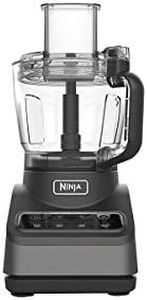

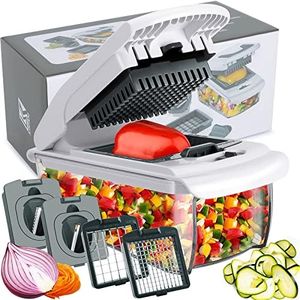
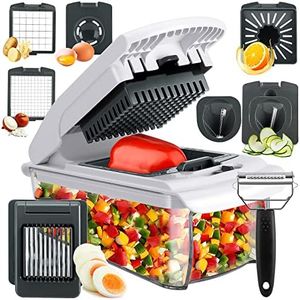
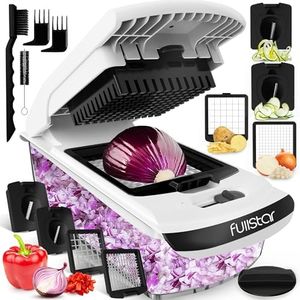
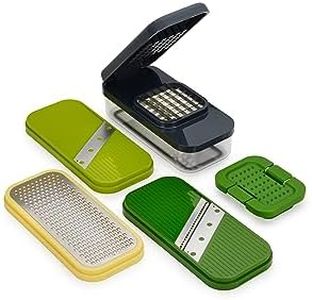

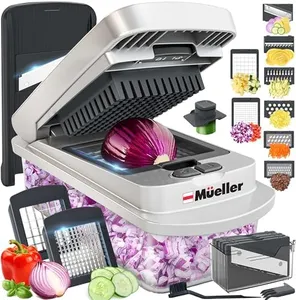
![Russell Hobbs Electric Vegetable Cutter [Schnitzel with 3 Graters: Coarse & Fine, Slices] Desire Red (BPA Free & Dishwasher Safe, Grater & Rasp) Chopper & Kitchen Grater 22280-56](https://images-proxy.bestreviews.guide/kEO897jwzEot4EuL1-Zcrg6FcHA=/0x300/https://m.media-amazon.com/images/I/41R9VzpfemL._AC_CX679_.jpg)

